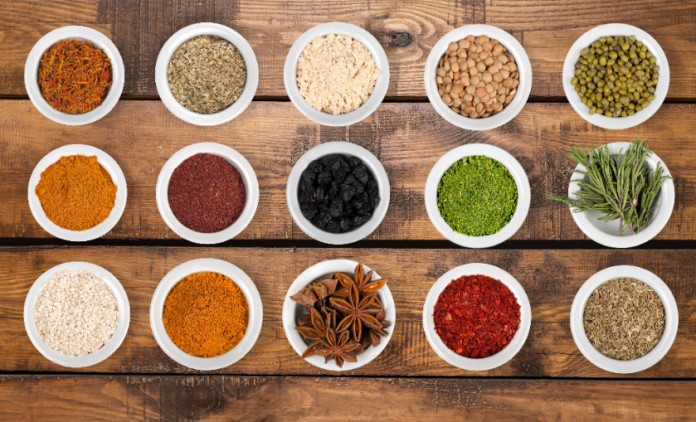
A study published online in the New England Journal of Medicine found cutting back on salt as little as half a teaspoon a day could prevent 92,000 deaths and nearly 100,00 heart attacks in the US every year. As a nation addicted to processed and prepared food, it is not surprising that salt consumption has risen by 50 percent since the 1970s. Coincidentally, the rate of obesity, heart attacks, high blood pressure, strokes, and kidney disease has also risen.
A certain amount of sodium is essential for good health. Sodium helps carry nutrients into the cells, distributes water throughout the body, maintains healthy blood pressure levels, and stimulates the adrenal glands. It also plays a role in nerve communication and muscle contraction, including the heart muscle. Hydrochloric acid, a fluid needed for proper digestion, also depends on the availability of sodium for production.
Our kidneys help regulate the amount of sodium in our bodies. When levels are low, the kidneys conserve sodium. When levels are high, excess sodium is excreted through the urine. If our kidneys can't get rid of enough of the excess, it begins to accumulate in our blood. And that can cause problems because sodium attracts and holds water. More sodium increases blood volume, which in turn makes our heart work harder to move the blood through our body.
Read more about the importance of decreasing dietary sodium
The average US diet has three main sources of sodium: processed and prepared foods; sodium-containing condiments; and natural sources of sodium found in vegetables, meat and dairy products. The American Heart Association recommends that you choose and prepare foods with little or no added salt to reduce the risk of cardiovascular disease. We should aim to eat less than 1,500 mg of added salt a day, the equivalent to about ¾ of a teaspoon. The average American consumes a whopping 3, 463 mg of sodium a day!
Sodium isn't just found in salt. If you want to reduce the sodium in your diet, consider putting down the salt shaker and limit the amount of processed and fast foods you consume.
Salt is an acquired taste. Most foods in their natural state contain some amount of sodium. Unfortunately, we have forgotten how delicious natural whole foods taste because of our obsession with salt or condiments containing salt. Nature has provided us with a gamut of tastes from sweet, found in fruits, to salty, found in vegetables like celery or kelp. A wonderful way to enhance flavor without adding salt is to use natural herbs and spices. Herbs and spices can transform a simple dish into a sensuous eating experience of lively and refreshing flavors sure to excite your taste buds.
Below is a guide to some common herbs and spices and suggested uses to help you create flavorful meals without any added salt.
Basil
Sweet basil is bright and pungent in taste. Leaves are green in color, round and pointed.
Use In: Pesto, salads, sauces, meats, fish, and soups. Pairs well with carrots, eggplant, potatoes, squash, spinach, and tomatoes.
Bay
Also known as Sweet Bay or Sweet Laurel, aromatic bay leaves are often used dried for maximum flavor.
Use In: Use in soups, sauces, or pickling solutions. Add to marinade solutions for meat or fish.
Cardamom
Tastes like ginger, with a hint of pine.
Use In: Used prominently in curry powder, but also enhances the flavor of pumpkin, squash, potatoes, and pastries. Cardamom is often combined with cumin and coriander seeds.
Cayenne
Hot, peppery flavor.
Use In: Used frequently in Cajun, Creole, Spanish, Mexican, Szechuan, Thai, and East Indian Recipes.
Cinnamon
One of the oldest spices known, cinnamon is derived from the inner bark of evergreen trees native to Sri Lanka, southwest India, and Asia. Sweet and aromatic, cinnamon is available whole or as a ground-up powder.
Use In: Versatile spice that complements a wide variety of foods and other spices. Works well with poultry, in curries, and with fruit, particularly apples and pears. Add to casseroles or eggplant, squash, and carrot dishes.
Coriander leaf or seed (Cilantro)
Fresh coriander leaves, also known as cilantro, bears a strong resemblance to Italian flat-leaf parsley, but with a stronger, distinct scent. The seeds, when dried, have a fragrant flavor reminiscent of both citrus peel and sage.
Use In: Combines nicely with beets, onions, potatoes, and lentils. Add to salads, salsas, soups, stews, curries, and rice dishes.
Cumin
Cumin is powerful peppery flavoring with slight citrus overtones. Integral spice in the cuisines of Mexico, India, and the Middle East.
Use In: Complements chicken, lamb, beans, lentils, vegetables, and rice dishes. Excellent in carrot or cabbage dishes.
Dill
Dill’s green leaves are wispy and fern-like and have a soft, sweet taste. Both the leaves and the seeds are used to flavor food.
Use In: Combines well with fruits, vegetables, fish, egg, and poultry. Should be added to the end of cooking time, since heat can destroy its delicate flavor.
Fennel
Mild licorice taste.
Use In: Salads, soups, fish, and vegetable dishes. It also complements rice, potatoes, tomato, egg, and apple dishes.
Ginger
Fragrant, pungent, and hot. It can be used fresh, dried or in powder form.
Use In: Curries, stews, and stir-fries. Complements poultry.
Marjoram
Member of the mint family. Similar to oregano but less pungent. Used in savory dishes.
Use In: Salads, fish, vegetables, meat, poultry, and egg dishes.
Mint
With more than 25 varieties, tastes range from cool, sweet, and slightly menthol.
Use In: Use fresh in salads, marinated vegetables, legumes, or tomato-based soups or stews. Also good in dips, dressings, yogurt or lamb dishes.
Nutmeg
The seed of an apricot-like fruit native to Indonesia, with cinnamon and peppery taste.
Use In: Can be used in either sweet or savory dishes, including pasta sauces, cheese dishes, cake, or milk (or milk alternative) puddings.
Oregano
Also from the mint family, similar to marjoram but stronger with an earthy, aromatic flavor.
Use In: Used in many Mediterranean dishes. Excellent in tomato-based sauces and stews. Complements, chicken, fish, and meat dishes.
Parsley
The most common types are curly or Italian flat-leaf. Mildly fresh aromatic flavor.
Use In: Soups, salads, sauces, and casseroles. Use with any vegetable, potato, or grain dish.
Rosemary
Pine-like, distinct flavor used either fresh or dried.
Use In: Marinades, vegetables, chicken, and fish dishes. Complements roast meats, especially lamb and chicken.
Sage
Grayish, silver-green leaves in color with an earthy aromatic taste that is both sweet and bitter.
Use In: As a flavoring for stuffing, good with vegetables, cheese and meat dishes, especially pork, game, and liver.
Tarragon
Sweet aromatic herb with a slighter peppery flavor reminiscent of fennel, anise, and licorice.
Use In: Soups, salads fish, chicken and egg dishes, Also good with raw or cooked tomato dishes. Complements, peas, potatoes, broccoli, carrot, and asparagus.
Thyme
Tiny leaves with a minty, tea-like flavor.
Use In: Used to make bouquet garni with parsley and bay. Add to stocks, marinades, soups, and casseroles. Good with fish, vegetables, and game dishes.
Read more about scary ingredients in conventional spices
DISCLAIMER: This article contains affiliate links, which means that if you click on one of the product links, Naturally Savvy will receive a small commission so we can keep pumping out amazing articles like this one. Thank you so much for your support!










